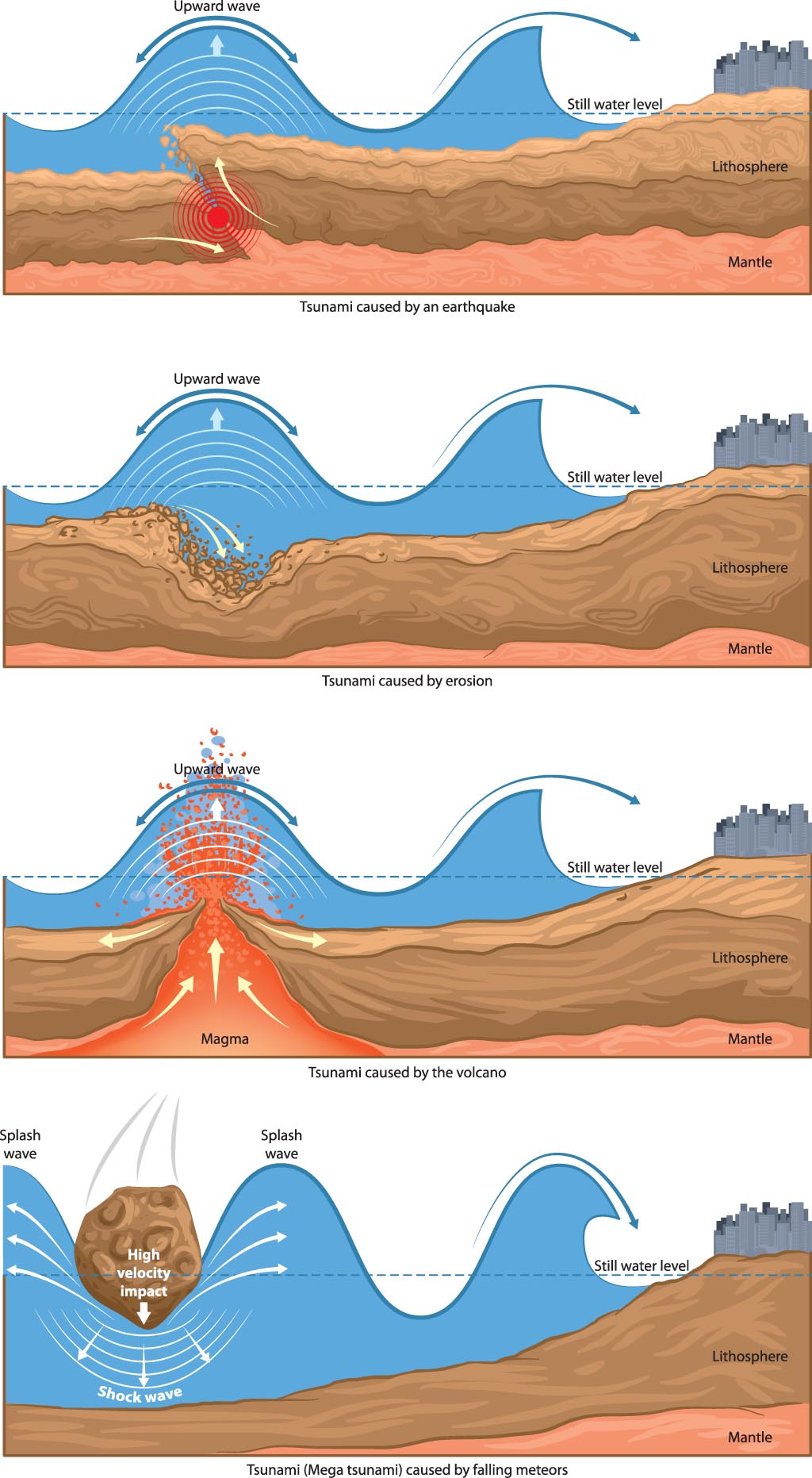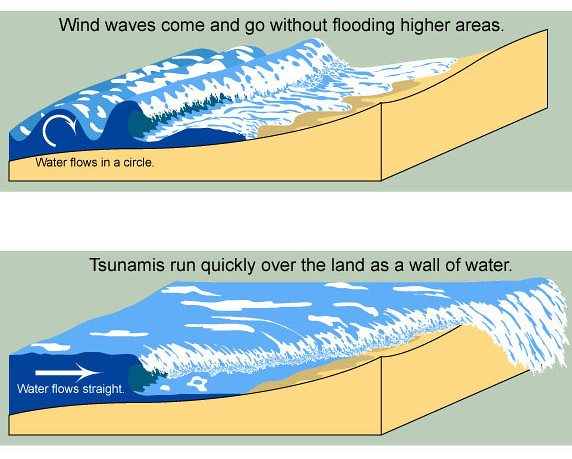"1957 Tsunami"

March 9, 1957
On this day, a 8.3 magnitude earthquake strikes near the Aleutian islands of Alaska. The resulting quake triggers a local tsunami with wave heights near 75 feet. The resulting waves result in no human loss in the area & Hawaii, thanks to an improved early warning system put into place after the April 1, 1946 (8.6 Earthquake) Tsunami, which emanated from the same area.
What is a Tsunami & how are they created? A tsunami is a system of waves that has been displaced by great volume of water. Commonly, tsunamis are formed through three methods:

1.) Earthquake
2.) Landslide
3.) Volcanic activity
...and, while not historically documented as often, but still possible...4.) Meteorite or other large meteorological event displacing ocean water
Tsunami Formation & Characteristics

Differences of Tidal waves and Tsunamis
When differentiating tidal waves and tsunamis, people largely use both terms to describe harbor waves. This is a common mistake. Tidal waves are circular in motion. Think of them in terms as "predictable." They are driven by by gravitational and atmospheric conditions:
1.) The Earth
2.) The Sun
3.) The Moon
4.) Wind*

Tsunamis should be viewed as "unpredictable." They are beyond the shadow of a doubt, an unprecedented event. While technology (ocean based sensors), historical and mathematical data has evolved and given us a better lead time to retreat from shorelines, there still remains a percentage of uncertainty with the tsunami forecast.
It is best in any case to heed the advice of the professionals at NOAA's Pacific Warning Center. Get acquainted with your surroundings NOW. Know where to seek safety by moving away from the shore and gaining altitude in an expeditious manner. Use the City and County of Honolulu's Tsunami Evacuation Plan to help formulate your plans accordingly.
To get credit for this Earthcache, DON'T POST YOUR ANSWERS TO THE LOG. THEY WILL BE DELETED! Please do not send one log per group, I want to see that you were actually present and did some legwork yourself. Send your answers first & then post your log. If I don't receive your answers in 24 hours, I will delete your log. If I have reasonable suspicion to believe your log has been "armchaired," I will delete it. Please include the following in your e-mail:
1. Title of the Earthcache
2. Date & Time
3. What physical evidence is left behind that allows you to discern a tsunami struck this area? Don't think too hard about it. YOU DO NOT NEED TO ENTER OR GO NEAR THE WATER TO ATTAIN THE INFORMATION!
4. What is your altitude at these coordinates (N 21° 38.905 W 157° 54.853)? Is this part of the inundation zone?
5. Where would you evacuate to if the ground shook in La'ie? How would you get there? Why is it important to move quickly? These questions require careful reflection and should be taken seriously.
6. OPTIONAL: A pic of you at GZ with your GPSr. Come on! You know you want to post a picture!

Sources: "1957 Aleutian Tsunami." 1957 Aleutian Tsunami. USC Tsunami Research Group, n.d. Web. 17 Mar. 2015.
"1957 Aleutian Tsunami." 1957 Aleutian Tsunami. Washington EDU, n.d. Web. 17 Mar. 2015.
"1957 Aleutians Tsunami." Western States Seismic Policy Council. Western States Seismic Policy Council, n.d. Web. 17 Mar. 2015.
"1957 Andreanof Islands Earthquake." Wikipedia. Wikimedia Foundation, n.d. Web. 17 Mar. 2015. .